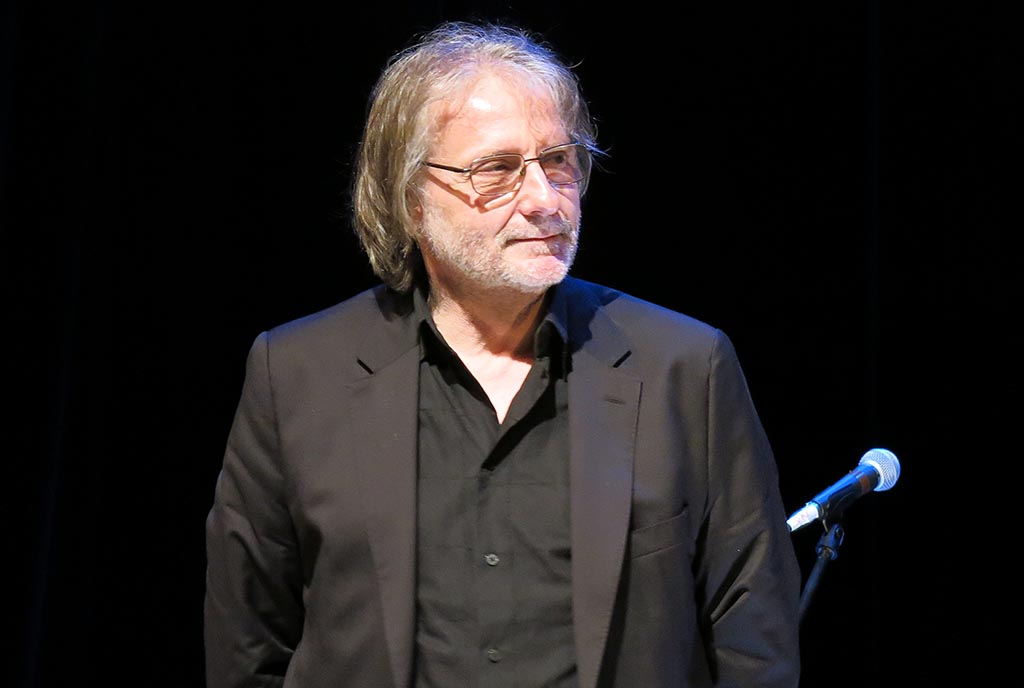By: Andrej Žitnik / Nova24tv
During Dr Vasko Simoniti’s term as Minister of Culture, we heard many serious accusations from the far left – about how he was deliberately destroying the Slovenian film because directors were critical of the Janša government. This was, of course, just another in a series of demagogic misinterpretations – the funds for the film were not even being distributed at the time when production could not take place, because they are disbursed in tranches, or after the projects are completed. After all, the Ministry under the leadership of Dr Simoniti allocated 1 million euros more for Slovenian film than under the previous left-wing governments. But behind the complaints, of course, there was something else entirely – a culture war.
The avant-garde directors were not prepared to accept the fact that the experts at the Ministry and the Slovenian Film Centre under the Janša government were also allocating funds for films that did not deal directly with feminism, the criticism of capitalism, transgender issues, or glorification of socialism. This was not at all to the liking of our progressive forces. If a film with patriotic content were to be made, that in itself would already be a scandal, if not rehabilitation of fascism.
When the Slovenian avant-garde, which is politically perfectly cohabitating specifically with the extreme party the Left (Levica), defended its right to make cultural war films, it referred mainly to aesthetics, which ordinary mortals do not understand, and on the other hand to the famous “added value.”
Recently, a Twitter user posted an interesting statistic about the films of our film-making crème de la crème and the “added value” they have created. So, let’s take a walk through the films that have been sponsored by the Ministry of Culture and the Slovenian Film Centre, and see how much such ventures have cost the taxpayers in the past and how much “added value” we got back from them.
These are Vinko Möderndorfer’s avant-garde hists that ordinary mortals do not understand but have financed:
Vinko Möderndorfer – “Zastoj” (“Deadlock”)
“Deadlock” is the story of a tragedy that fatally links two married couples from different poles of the social ladder. The film ticks off a key part of Slovenian filmography: the class struggle. The differences between the rich and the poor, the privileged and unprivileged. And how socialism will one day eliminate these differences. The N1 media outlet reports that at the premiere of the film, the audience gave the director a standing ovation. The film was also the winner of the Mostar Film Festival’s Best Director Award. Apparently, however, very few joined in on the standing ovation after the premiere was over. On its first weekend in theatres, the film attracted 340 spectators, and 605 spectators in total thereafter, thus generating 1,570 euros plus 150 euros for value-added tax. Meanwhile, the taxpayers have paid 600 thousand euros to Vinko for his socialist hobby project.
Vinko Möderndorfer – “Inferno”
Yet another boring class struggle attempt by Vinko from 2013. A young family with two children finds itself in financial distress. The main character, a factory worker called Mare, donates blood every week, in order to get half a sausage. The mother burns herself alive, the children go into foster care, and the father kills someone with a granite cube. In addition to the self-immolation, the film also contains brutal physical violence, a charred corpse, explicit sex scenes, a car crash in which a unionist is killed by a drunk driver, and attempted surgical removal of a kidney in exchange for money, which is rejected by the dealer because of a genetic defect – and they used the popular “uprisings” of 2012/2013 against the Janša government as the backdrop. How many spectators turned up? 3,096, which brought in 10,205 euros, while the VAT on the tickets amounted to 970 euros. For this hobby project of Vinko’s, we, the taxpayers, paid Vinko 750 thousand euros. With more than half of the audience leaving the film screening in protest, Vinko concluded that he had made a good film.
Vinko Möderndorfer – “Predmestje” (“The Suburbs”)
Marjan and his group of friends from the suburbs are disturbed by the arrival of a young couple of different nationality, who move into their suburb. Through the secret filming of the couple in love, the tragic fate of a family that always blames others for its misfortunes is revealed. “The Suburbs” is a film about emerging xenophobia and nationalism. It is a story about the suburbs in human souls. A film about how xenophobic we Slovenians are, attracted 4,895 people to the cinema, who paid a total of 18,092 euros for their tickets and 1,178 euros in VAT. The taxpayers’ contribution to the creation of the movie was calculated at 830,784.00 euros.
Vinko Möderndorfer – “Pokrajina št.2” (“Landscape No. 2”)
The film “Landscape No. 2” is the story of the killings of Nazi collaborators after World War II, where Möderndorfer relativises the killings of innocent people after the bloody revolution, suggesting that they were purely national traitors. Landscape No. 2 was seen by 7,236 spectators who paid a total of 24,207 euros to see it. The film was financed by the taxpayers with 646,803.00 euros.
As you can see, quite a few “state” films have been made under the directorial baton of Vinko Möderndorfer, a great promoter of the added value of Slovenian cinema. We have paid Vinko millions of euros over the years, and we got back just over 10 thousand euros. So, there is no added value to spare. Which only leaves us with the catharsis that only the enlightened can experience in content with the class struggle theme.
In the next article, we will look at what we can expect in the coming years, or rather, what films full of aesthetics, deep socialist teaching and added value the Ministry of Culture and the Slovenian Film Centre will treat us to next year.
